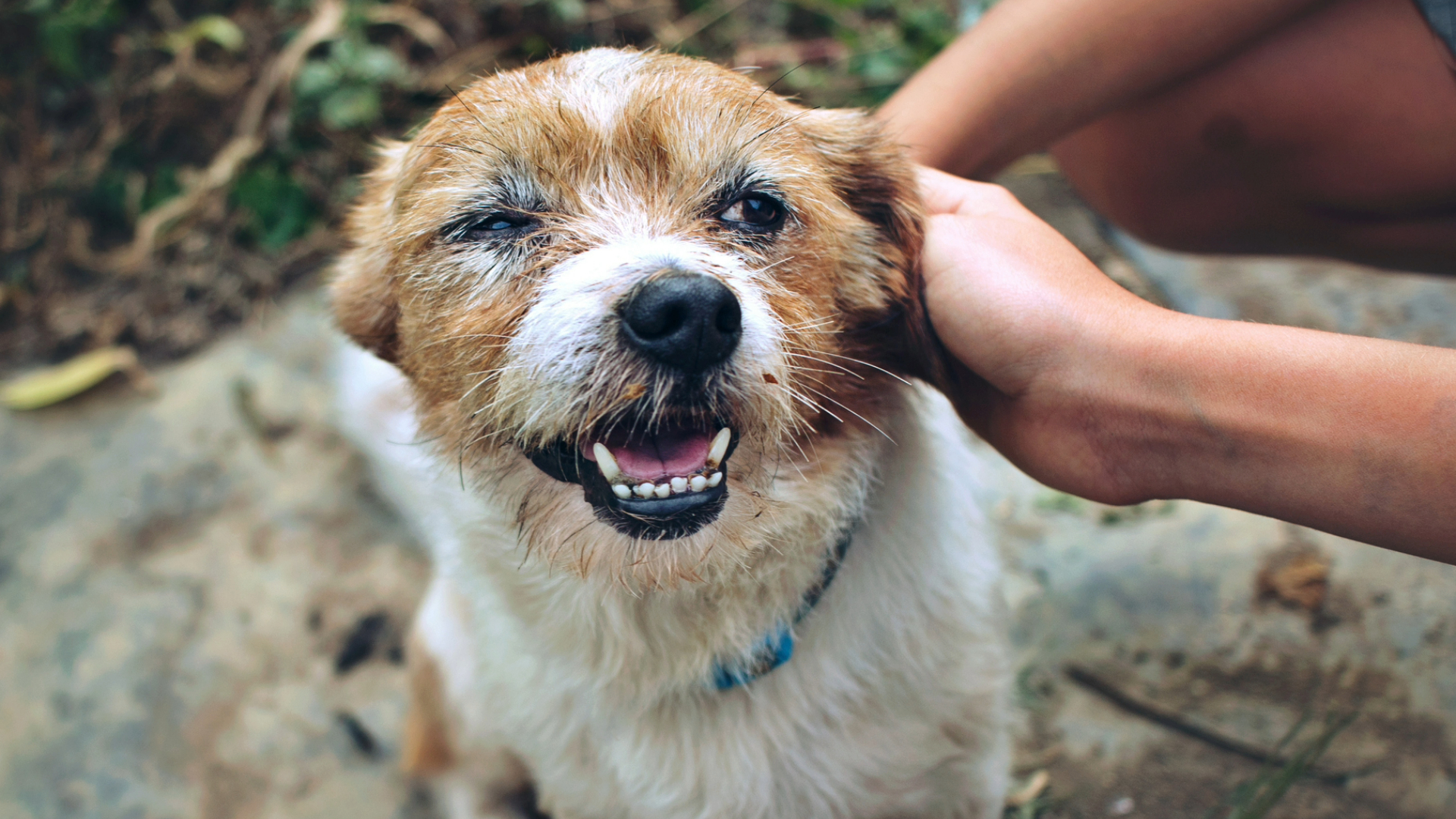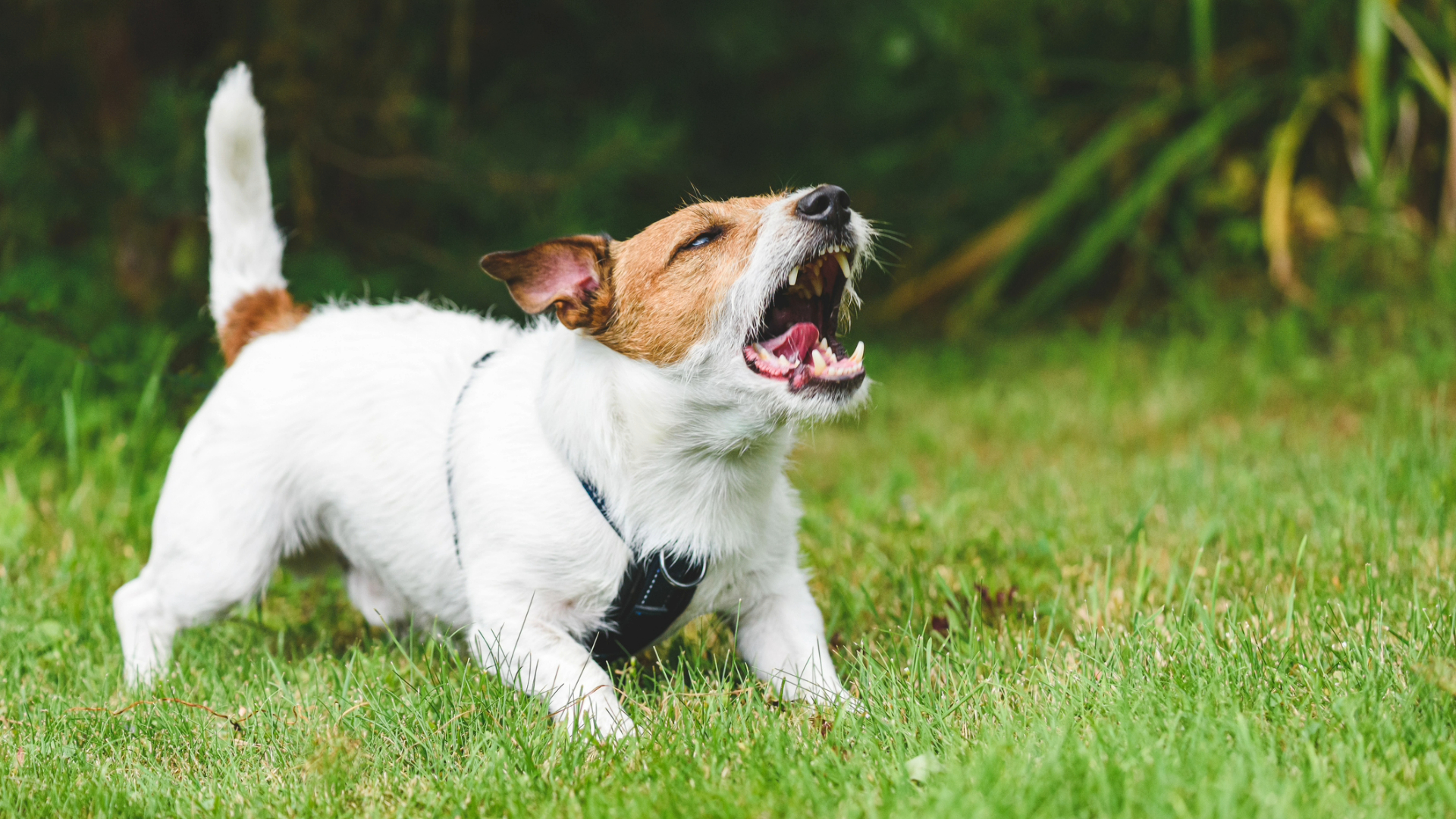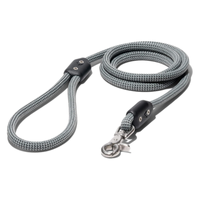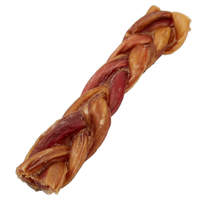My dog had Jekyll and Hyde Syndrome - here's how I managed their emotional response
I’m a dog behaviorist - follow my simple steps to handle a dog with Jekyll and Hyde Syndrome.

If your dog is usually sweet and cuddly, but his behavior suddenly flips into reactivity or aggression, you may have a dog with Jekyll and Hyde Syndrome. If so, this article will help you understand and manage your dog's unusual behavior using simple and positive strategies.
Jekyll and Hyde syndrome can be tricky to manage. Before I trained as a dog behaviorist, I made many mistakes with my Border Collie Jessie, a Jekyll and Hyde dog.
I have helped many other dogs with similar issues including Poppy, my weimaraner cross. Sometimes, long-lasting chews can help divert a food-motivated Jekyll and Hyde dog, but we will cover multiple ways to help your dog manage his behavior to prevent reactivity and aggression.
What is Jekyll and Hyde Syndrome?
Jekyll and Hyde syndrome refers to a dog that displays unpredictable aggression. To help you understand, I will describe an incident with Jessie, my rescue collie.
We rescued Jessie when she was four months old. She had a sweet, cuddly personality and settled well. When Jessie was about nine months old, she suddenly became dog-reactive. Her reactions were extreme, like a red rage towards other dogs, but she was great with people.
One day, our friend Julie was standing and stroking Jessie, who had her paws on Julie's waist. Jessie seemed happy with the attention but suddenly turned and bit Julie's hand, causing bleeding. I was horrified and baffled by the behavior and took Jessie to the veterinary clinic to get checked for pain. They could find nothing physically wrong.
After that, Jessie bit two other people randomly. At the time, I had no idea how to tackle dog aggression.
PetsRadar Newsletter
Get the best advice, tips and top tech for your beloved Pets

What causes Jekyll and Hyde Syndrome?
There could be multiple reasons for Jekyll and Hyde syndrome. In Jessie's case, I believe it was a visit to a noisy dog event I attended. She was a working collie breed and super sensitive. With hundreds of dogs barking, Jessie froze.
Looking back, I realize poor Jessie was terrified. What I should have done is remove her from the environment. Fourteen years later, I still feel guilty about my lack of understanding.
There could be one or multiple reasons for Jekyll and Hyde behavior:
- Food or resource guarding
- Pack bullying (if you have other dogs)
- Neurological issues
- Lack of exercise
- Lack of training
- The dog is in pain
- Rough handling
- Poor breeding
- Incorrect diet
- Health issues

How to manage Jekyll and Hyde behavior
The first step is to rule out pain or health problems. We later discovered that Jessie had a pancreatic problem, which could have made her feel unwell and grumpy.
Secondly, understand that it's not your dog's fault. Our job as dog owners is to discover what's causing the issue. We often don't notice changes in our dog's daily behavior and habits until it escalates into something problematic.
It's helpful to keep a daily journal and document the following:
- Your dog's food
- Monitor his stools
- Exercise levels
- When the behavior occurred (what was the time of day? What was happening at the time? Did anything about your dog's behavior change before the response? Who was involved? How long did the behavior last? How did you react? What steps did you take after the behavior?
I wish I had known to keep daily details because that's what I did with my reactive dog, Poppy. I failed with Jessie. My dog trainer fell in love with her, and she joined her family of nine dogs. Eventually, the vet diagnosed pancreatitis, and she retired to a quieter home with my dog trainer's mum.
It was not an easy journey, but my mistakes with Jessie led me to become a dog behaviorist. When I rescued Poppy, I was better prepared to overcome her reactivity. She would have also become a Jekyll and Hyde dog in the wrong hands.
You might like to discover the 5 mistakes I made with my reactive dog that you’ll want to avoid.

Here are my nine top tips for what to do with a Jekyll and Hyde dog:
1. Modify your behavior: Try to see things from your dog's perspective. For instance, if your dog is reactive, it could be fear-driven behavior. Protecting what he values may have become a habit if your dog resource guards food or toys.
2. Get help from a dog behaviorist: Find someone who uses positive reinforcement and understands how to calm a reactive dog.
3. Monitor changes: it can sometimes seem like your dog's behavior isn't improving, so track incremental changes.
4. Get the family on the same page: The entire family must follow the same training protocols when rehabilitating your dog.
5. Manage the behavior safely: If your dog shows aggression, keep him safe and away from what triggers him until you have a training plan to work with. Keep him on the leash around whatever triggers the behavior, such as other dogs.
Atlas Pet Company Lifetime Leash
Looking for a long-lasting dog leash that you won’t have to replace? We’ve found the perfect option for you (even if your dog is strong and active). Our tester Sarah tried it out on Duke the dog, and praised the sleek design and soft material. In her words, it’s a “game-changer”.
6. Get him checked by your vet: It is essential to rule out pain or illness.
7. Consider changing his diet: Some dogs are allergic to certain ingredients, like grains. A change to another feed can sometimes create radical improvements. Your vet may advise. This feature on changing dog food will help you to transition safely.
8. Avoid flooding your dog: Flooding is when you expose a dog to something he fears. It was my biggest mistake with Jessie. Instead, move your dog away from what he fears until he calms. Gradually, you can decrease distances by using positive reinforcement.
9. Stay hopeful: It's possible to rehabilitate a Jekyll and Hyde dog unless it's a neurological issue. Stay optimistic and seek help if you're struggling to cope with your dog's behavior.
Like people, dogs need to be understood. My journey with my reactive dog Poppy, as a dog behaviorist, was the most rewarding experience I've ever had with a dog. Working together and watching my reactive dog become happy and balanced transformed our relationship into a deep bond.
Good luck with rehabilitating your Jekyll and Hyde dog. Enjoy the journey and the rewards of living with a happier and calmer dog.
If your dog is food-motivated, this feature reveals everything you need to know about training dogs with treats. Looking for the best dog treats? We’ve rounded up the best on the market in this guide.
Bones & Chews Braided Bully Stick 6" Dog Treats
The 6" braided sticks contain no nasty chemicals or preservatives and are a great, healthy alternative to rawhide for a tasty way to keep your dog's teeth and gums clean.

Jan is a dog behaviorist and writer living in the Cotswolds, UK. She has shared her life with dogs for over fifty years and is fascinated by behavior. She enjoys helping people better understand their dogs to develop a deep bond and enjoy time together. Jan particularly enjoys working with impulsive and reactive dogs as her legacy from helping Poppy, her rescue Weimaraner cross overcome fear reactivity.


